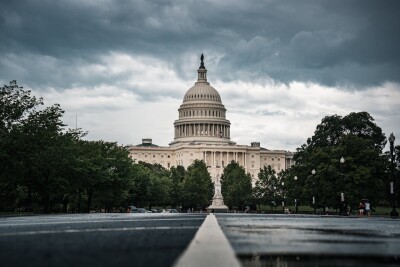From the development of a UTM system, the talks about Remote ID and BVLOS, to EASA’s common drone rules for all of Europe and US policy bans on Chinese-sourced drone purchases, laws and regulations are, and will continue to be, predominant subjects in the drone industry. With how fast things can change and grow in this industry, Commercial UAV News connected with a panel of industry leaders to understand and discuss the current and future impact of regulation and law on the drone industry.
As one of the growing topics in the industry, Drone Autonomy is a big focus for Skydio, a U.S. drone manufacturer that developed an AI-powered brain called Skydio Autonomy. Brendan Groves, Head of Regulatory and Policy Affairs at Skydio, believes this is something the US and other regulatory systems must account for going forward.
“The aviation regulatory regime has always revolved around the idea of a pilot in command, for a good reason! You need someone with a hand on the stick, controlling the throttle, and there’s no way around that. Except that there is,” Groves stated. “So, what happens when the pilot in command is supplemented or replaced by a computer? Those are the questions our government and others will have to deal with.”
For beyond visual line of sight, planning out missions, compiling the required documentation, and figuring out risk assessment can become an overwhelming task. That is why Iris Automation focused on the development of a tool to help customers navigate BVLOS waiver processes in multiple different geographies. As a result, the Waiver Resource Center is a combination of Software as a Service (SaaS) and in-house aviation policy expertise.
“We’re still in the early days of the BVLOS regulatory journey,” mentioned Gabrielle Wain, VP of Global Policy and Government Affairs at Iris Automation. “As Iris builds up and continues to build that knowledge and insight into the process, we want to provide the tools and resources to our customers.”
With a focus on providing the data and resources communities and pilots need to ensure safer drone activities, Airspace Link is working with state and local agencies to determine ground risk profiles and streamline authorization processes.
“What used to take 90 days to get authorization in controlled airspace, now takes seconds. And almost half of the US population is in controlled airspace,” Michael Healander, President & CEO at Airspace Link, said. “So, there are things that are happening to reduce the barrier for operations.”
While there have been some bumps and bruises along the way, James Licata, Business Development Manager at Hidden Level, thinks a proper implementation of Remote ID will greatly increase airspace safety for everyone. However, he claims there are “a lot of practical issues that need to be solved” such as how manned aviation can potentially use it.
Moreover, concerns about Chinese drones and “cyber vulnerabilities” over the past few years led to various US government agencies to institute policy bans on DJI and China-manufactured drones. Groves claims these measures intend to address the threat presented by using products whose manufacturers are bound to comply with capacious and concerning national security intelligence laws. Regarding China, there are several laws that make it quite concerning, so it’s more about the government of China than a particular company.
“Drones are computers that fly. Drones are part of the Internet of Things (IoT). But when they began, they weren’t,” Groves added. “They were just fly by wire, hand-flown devices, and they weren’t intended to be connected to the network. That paradigm has evolved, so security is catching up along with it. The drone industry has been slow to realize that threat, but it’s now waking up to it.”
Some people might think the FAA and other regulators are blocking the industry’s progress but integrating drones into our airspace has many factors to take into consideration. To guarantee everybody’s safety, just like manned aircraft, there are certain standards drones need to adhere to.
To learn more about this topic and hear more insights from our panelists, watch the on-demand Impact of Regulation and Law on the Drone Industry webinar available here.
















Comments